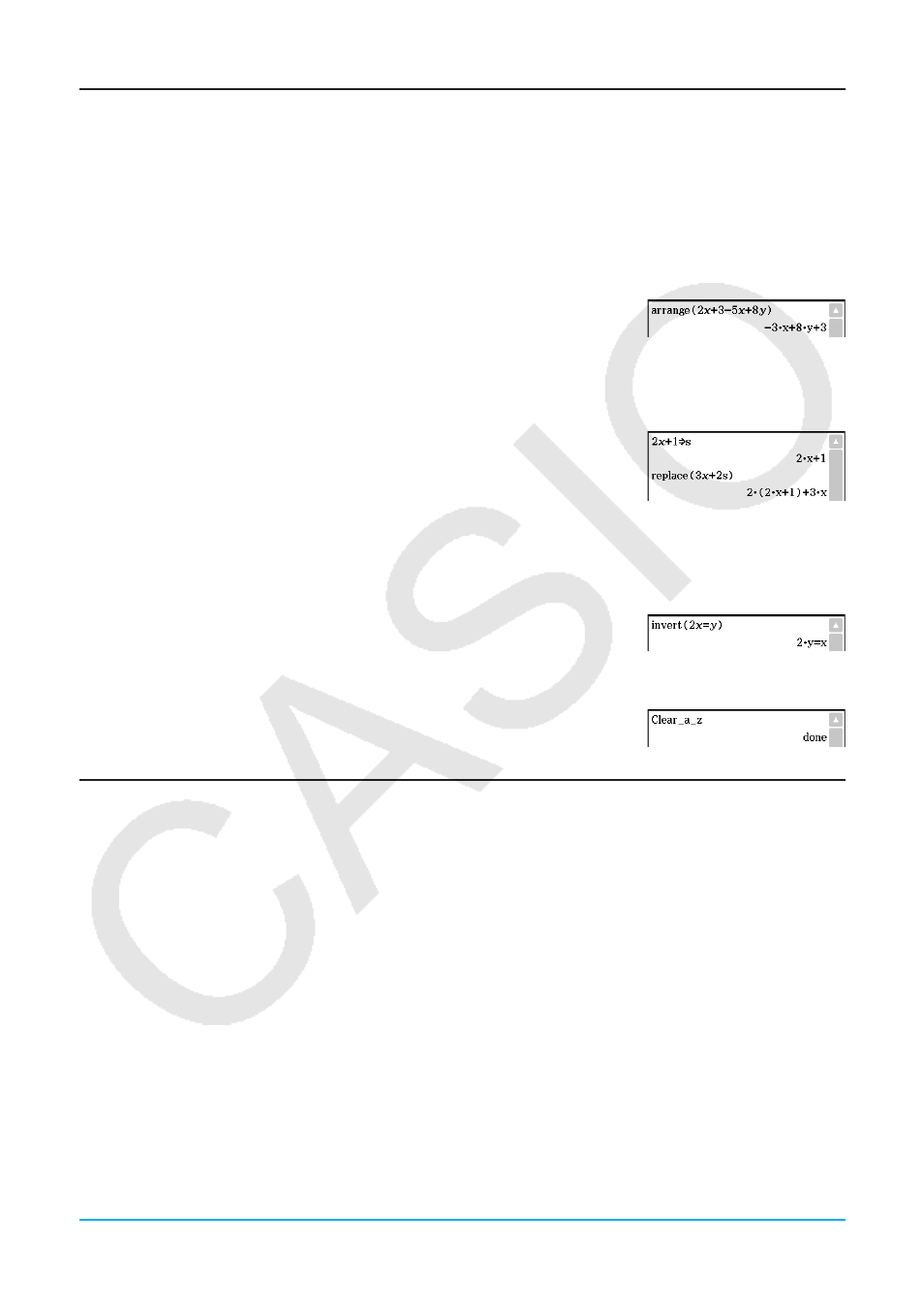Casio ClassPad II fx-CP400 User Manual
Page 82

Chapter 2: Main Application
82
Using the Assistant Submenu
The [Assistant] submenu contains two commands related to the Assistant mode.
Note that the following commands are valid in the Assistant mode only. For more information on the Assistant
mode see “Assistant Mode and Algebra Mode” on page 45.
u arrange [Action][Assistant][arrange]
Function: Collects like terms and arranges them in descending order, starting with the term that contains the
smallest coefficient.
Syntax: arrange (Exp/Eq/Ineq/List/Mat [ ) ]
Example: To arrange 2
x
+ 3 – 5
x
+ 8
y
in the sequence of its variables
u replace [Action][Assistant][replace]
Function: Replaces the variable in an expression, equation or inequality with the value assigned to a variable
using the “store” command.
Syntax: replace (Exp/Eq/Ineq/List/Mat [ ) ]
Example: To replace
s
in the expression 3
x
+ 2
s
, when the expression 2
x
+ 1
is assigned to
s
u invert [Action][Transformation][invert]
Function: Inverts two variables in an expression.
Syntax: invert (Exp/Eq/Ineq/List [,variable-1, variable-2] [ ) ]
•
x
and
y
are inverted when variables are not specified.
Example: To invert
x
and
y
in the expression 2
x
=
y
u Clear_a_z
Function: Clears all single-character variable names (a–z and A–Z) in the
current folder.
Using the Distribution/Inv.Dist Submenu
The [Distribution/Inv.Dist] submenu includes functions related to each type of statistical calculation distribution
probability. The functions on this submenu perform the same calculations as the Distribution commands that
are available in the Statistics application and the Main, eActivity, and Program applications.
For information about the numeric expressions used in calculations, see “Distributions” on page 145.
For information about the meanings of the variables used in the syntaxes of the functions presented in this
section, and the system variables that store the values obtained as calculation results, see “Input and Output
Terms” on page 148.
Specifying Arguments within the Distribution Function
You can specify either values or list data for any of the arguments within the Distribution function. The normPDf
function (page 83) syntax (normPDf(
x
,
Ʊ
,
ƫ
)) that returns normal probability density can be used to perform the
calculations shown below. The “Number Format” setting is “Fix 2” for all calculation results.
normPDf(1, 1, 0) = 0.24
normPDf({1, 2}, 1, 0) = {0.24, 0.05}
normPDf(1, {1, 2}, 0) = {0.24, 0.18}
normPDf({1, 2},{1, 2}, 0) = {0.24, 0.12}
normPDf({1, 2},{1, 2},{1, 0}) = {0.40, 0.12}
